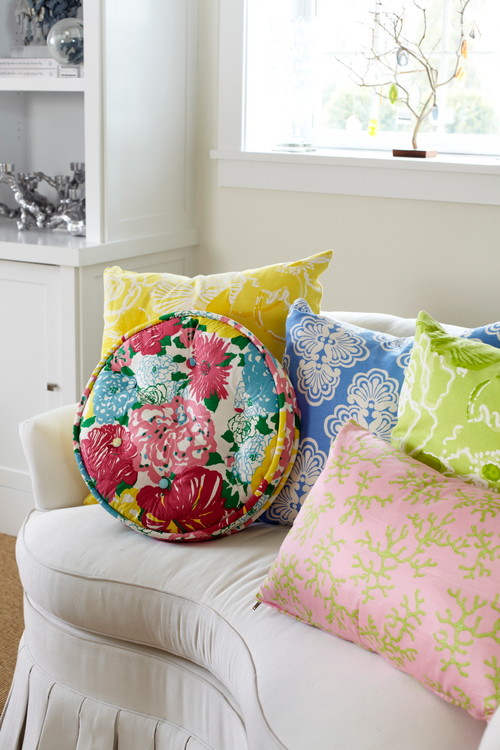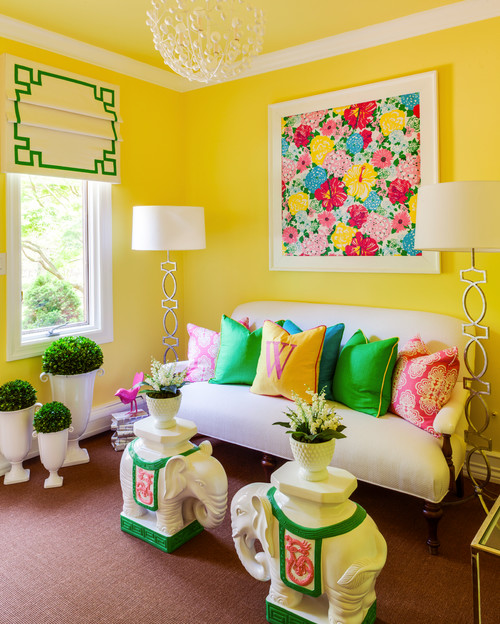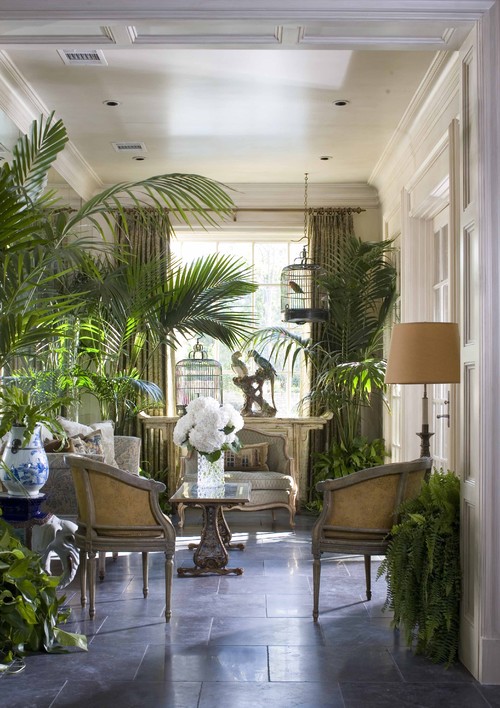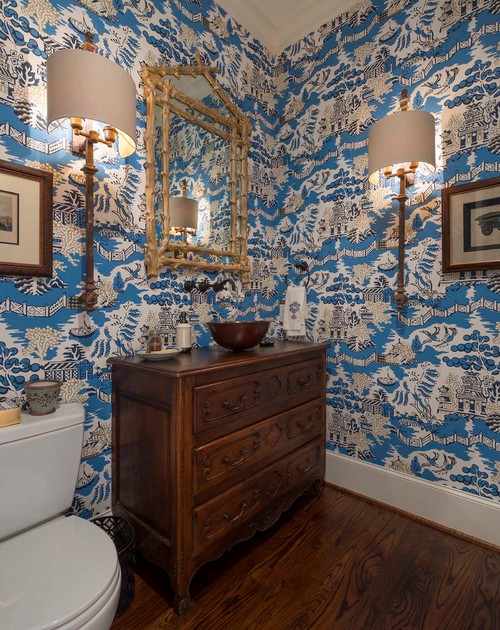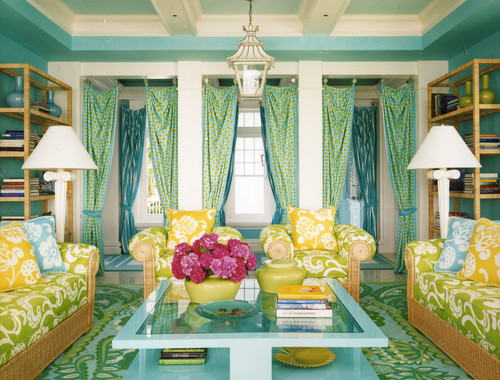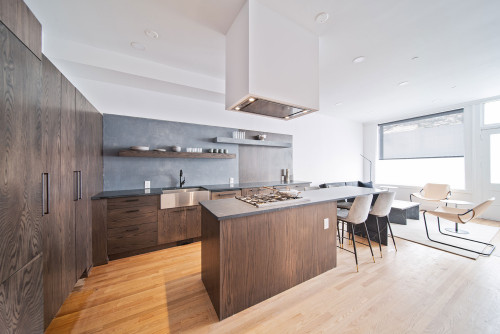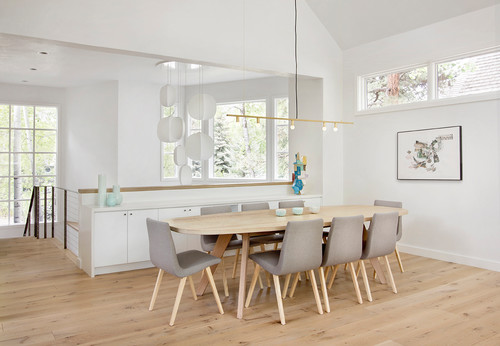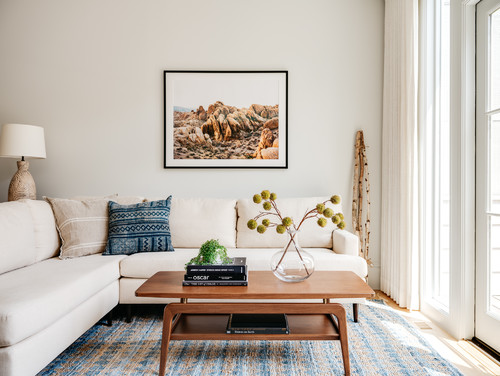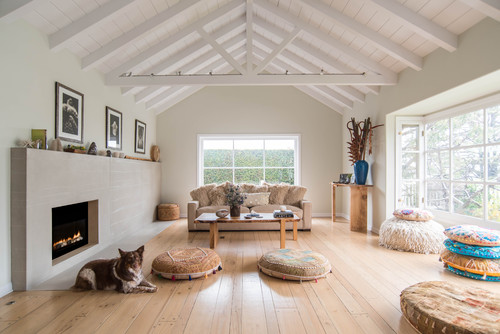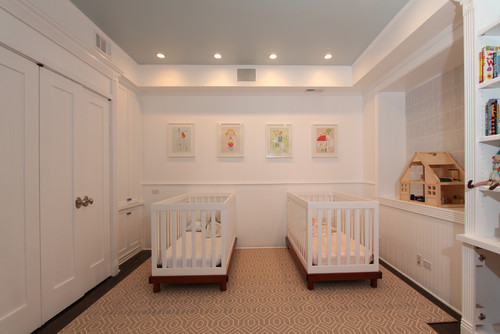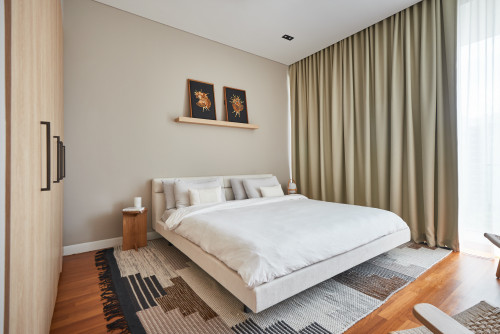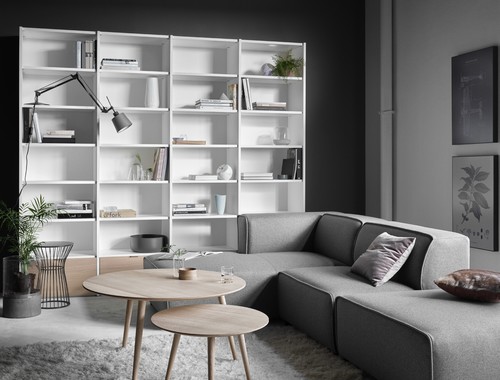Saturday, January 30, 2021
Friday, January 29, 2021
Staying Home for the Super Bowl? 9 Items To Give Your Place a Sports Bar Vibe on Game Day
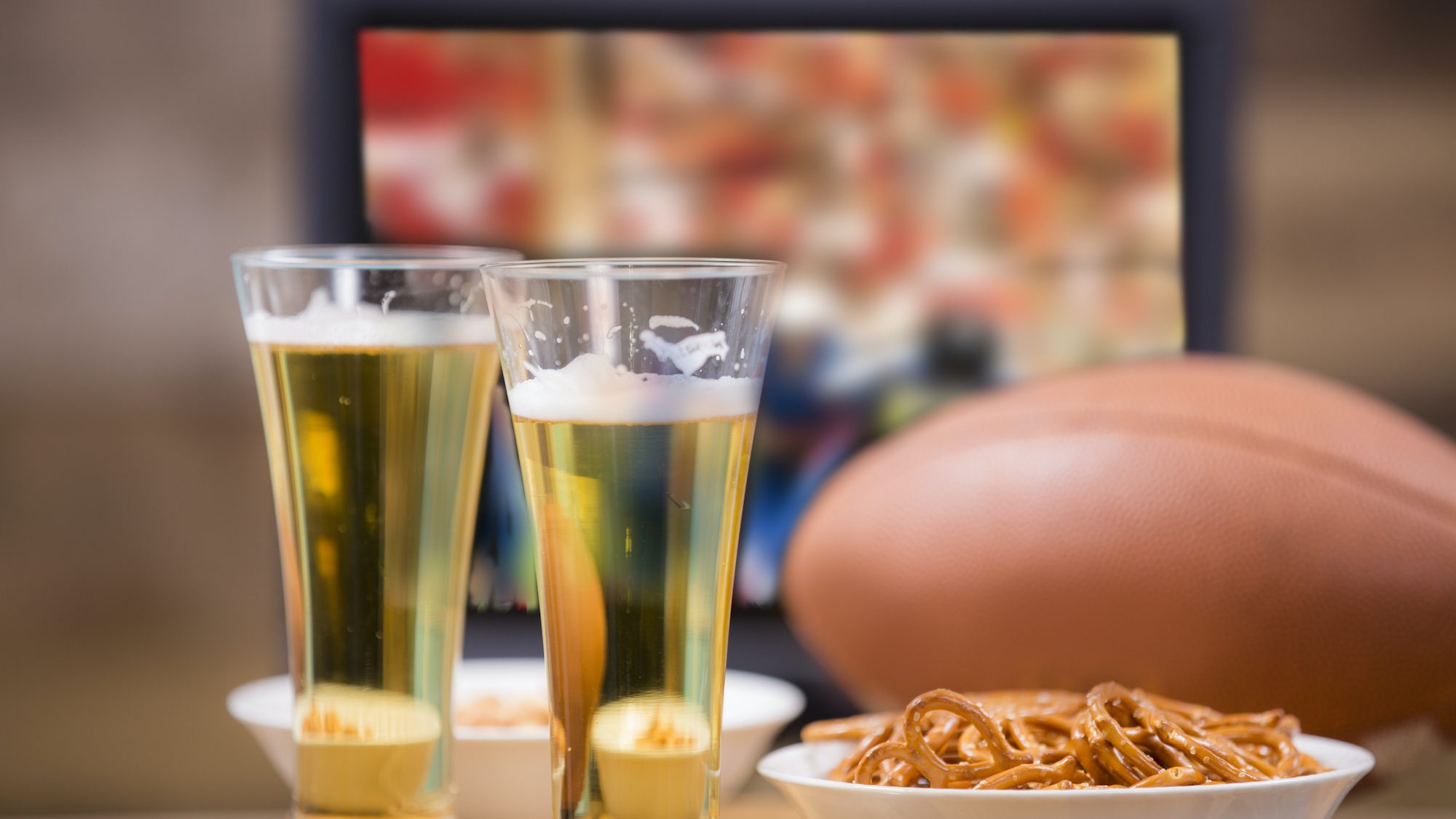
fstop123/Getty Images
Truth: Some folks were just fine with the fact that Thanksgiving and other holidays had to be scaled back last year due to the coronavirus. Frankly, less exposure to Aunt Martha meant you could avoid her gloppy casserole and prying questions about your love life.
But we’ll admit that watching the Super Bowl at home—when you’d rather be at your favorite sports bar tossing down hot wings and yelling at the screen—is just a wee bit depressing.
Alas, we still shouldn’t gather indoors as the pandemic hangs on. But the game (and the halftime show!) must go on—and there’s no reason we shouldn’t enjoy it in style. So why not transform your den into your own mini sports arena? For some help, here’s what the pros would include for maximum fun on game day.
1. TV trays
Wayfair
“The Super Bowl is all about the snacks, so I’d pick these retro TV trays, especially since you can also use them as a mini desk after game day,” says Darla DeMorrow, author of “Organizing Your Home With SORT and SUCCEED.”
This wheeled pick can be slid into place easily, plus the lower shelves neatly hold remotes, books, and other den gear ($105, Wayfair).
2. TV wall mount
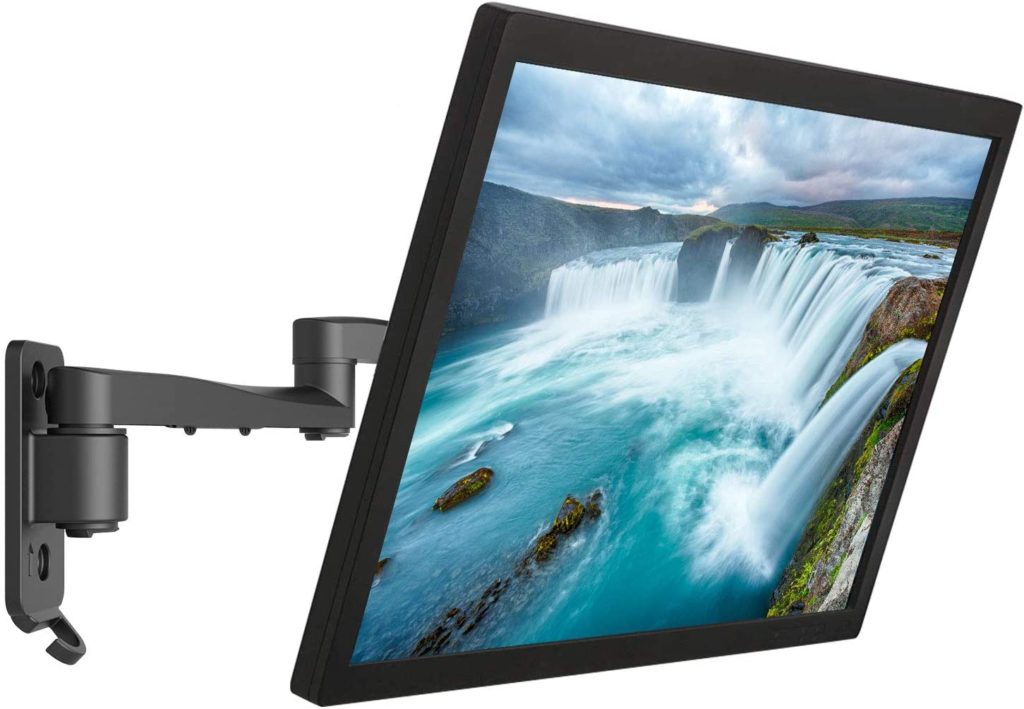
Amazon
Among the best parts of sitting in a sports bar are the multiple screens and replays, which means you’ll never miss a single fumble. At home, you can up your game with a sturdy wall mount so your flat-screen TV is perfectly tilted.
You can mount the bracket on wood, brick, or concrete and then relax, knowing the 10-year warranty has you covered ($27, Amazon).
___
Watch: Rent vs. Buy: Yes, Even NFL Players Should Run the Numbers
___
3. Cozy seating

Crate & Barrel
Comfy recliners or—better yet—smart-looking swivel chairs are the ultimate in seating in front of your big-screen TV, says Karen Gray-Plaisted of Design Solutions KGP.
This barrel shape sports a ’70s vibe as well as durable boucle upholstery that’ll help hide black bean dip drips ($1,199, Crate & Barrel).
4. Themed tumblers
Macy's
Real fans feature their favorite team’s colors and logo at Super Bowl time, whether it’s a jersey hung on the wall or a set of cool containers for serving drinks.
If your money’s on Tom Brady to lead the Tampa Bay Buccaneers to the championship this year, outfit your den with these bright tumblers. Beverages stay cold for a full 24 hours thanks to double-wall insulation ($30, Macy’s).
5. Air fryer
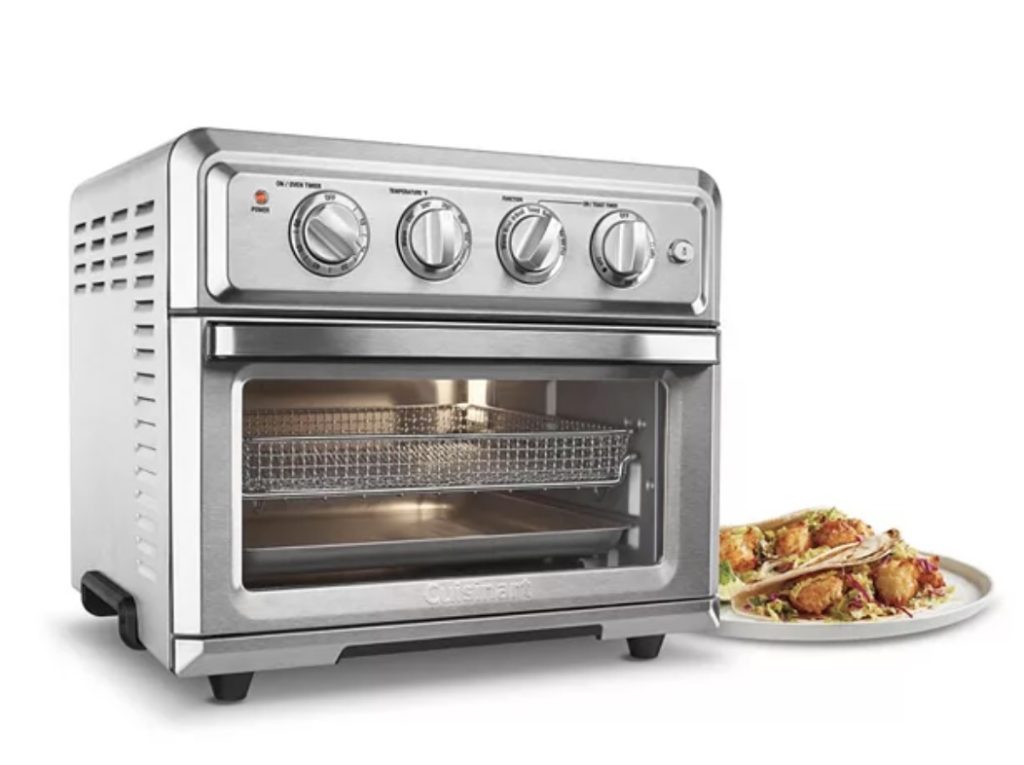
Kohl's
Homemade mac and cheese balls are cheaper (and possibly even more delicious) if you prep them yourself. But the best home cooking perk comes from using an air fryer, which yields healthier results.
If you can swing it, this high-end appliance is a workhorse that air-fries, bakes, broils, and toasts all of your snacks and breakfast foods in a stylish, stainless-steel package ($250, Kohl’s).
6. Floor pillows
Wayfair
“Since this year is all about staying safe at home, I think football fans should get cozy with big floor pillows, and this way, everyone has a direct line-of-sight seat for the game,” says DeMorrow.
This twill fabric features a simple color palette that’ll mesh with most decor schemes ($97, Wayfair).
7. Mini fridge
Wayfair
What’s the one thing you can’t run out of during the Super Bowl? That’s right, cold beer. To ensure easy access to your suds, consider a mini fridge (especially in this sea-foam shade) for your den or rec room. This little guy pulls its weight as it also includes a freezer compartment ($180, Wayfair).
8. Panini press
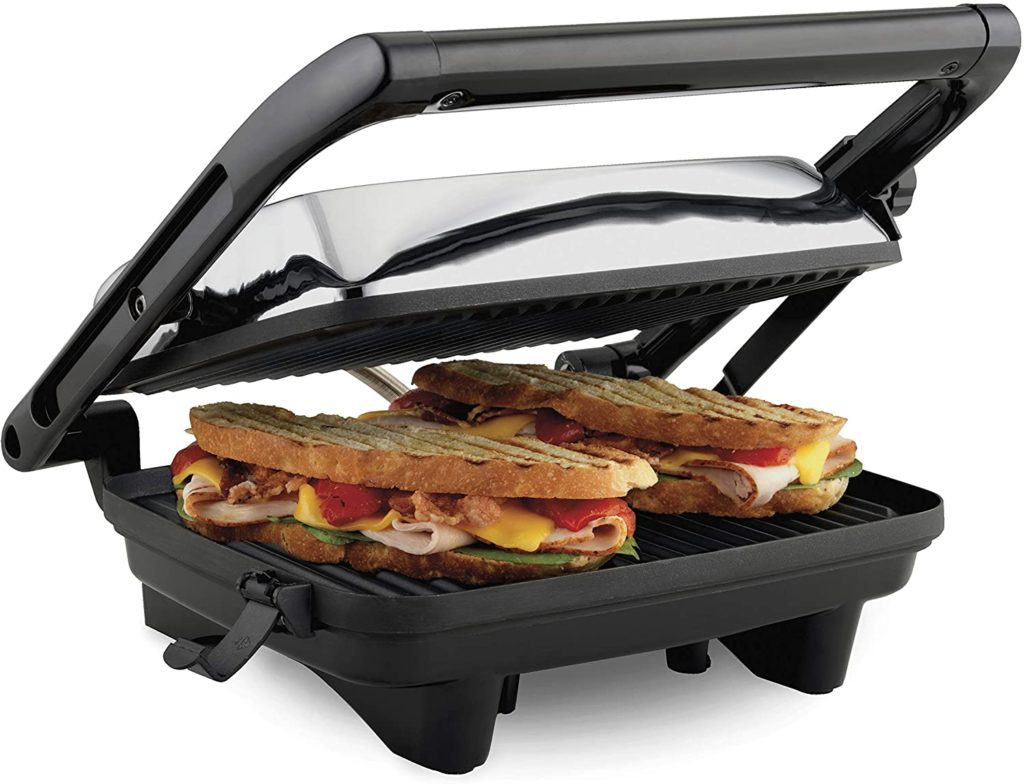
Amazon
Wonder why those subs taste so good at the bar? They’re crisped on the outside and melty between the layers—and you can achieve this same hoagie nirvana in a panini press.
“I love to lay out cold cuts, bread, and condiments, and then each person can make their own hot sandwich at halftime,” says Gray-Plaisted.
Thick paninis are no challenge for this nonstick press, which is also aces at griddling quesadillas ($50, Amazon).
9. Cheese tray

Wayfair
Aww, did you think we wouldn’t give the Kansas City Chiefs equal time? They’re in it to win it, too, this year. Plus you can’t have too many trays and serving platters during the Super Bowl.
This well-priced choice comes with its own nifty cheese knife with a handy pick at the end for spearing the fattest piece of brie ($53, Wayfair).
The post Staying Home for the Super Bowl? 9 Items To Give Your Place a Sports Bar Vibe on Game Day appeared first on Real Estate News & Insights | realtor.com®.
6 Essential Tips for Homeowners From Angie’s List Co-Founder Angie Hicks
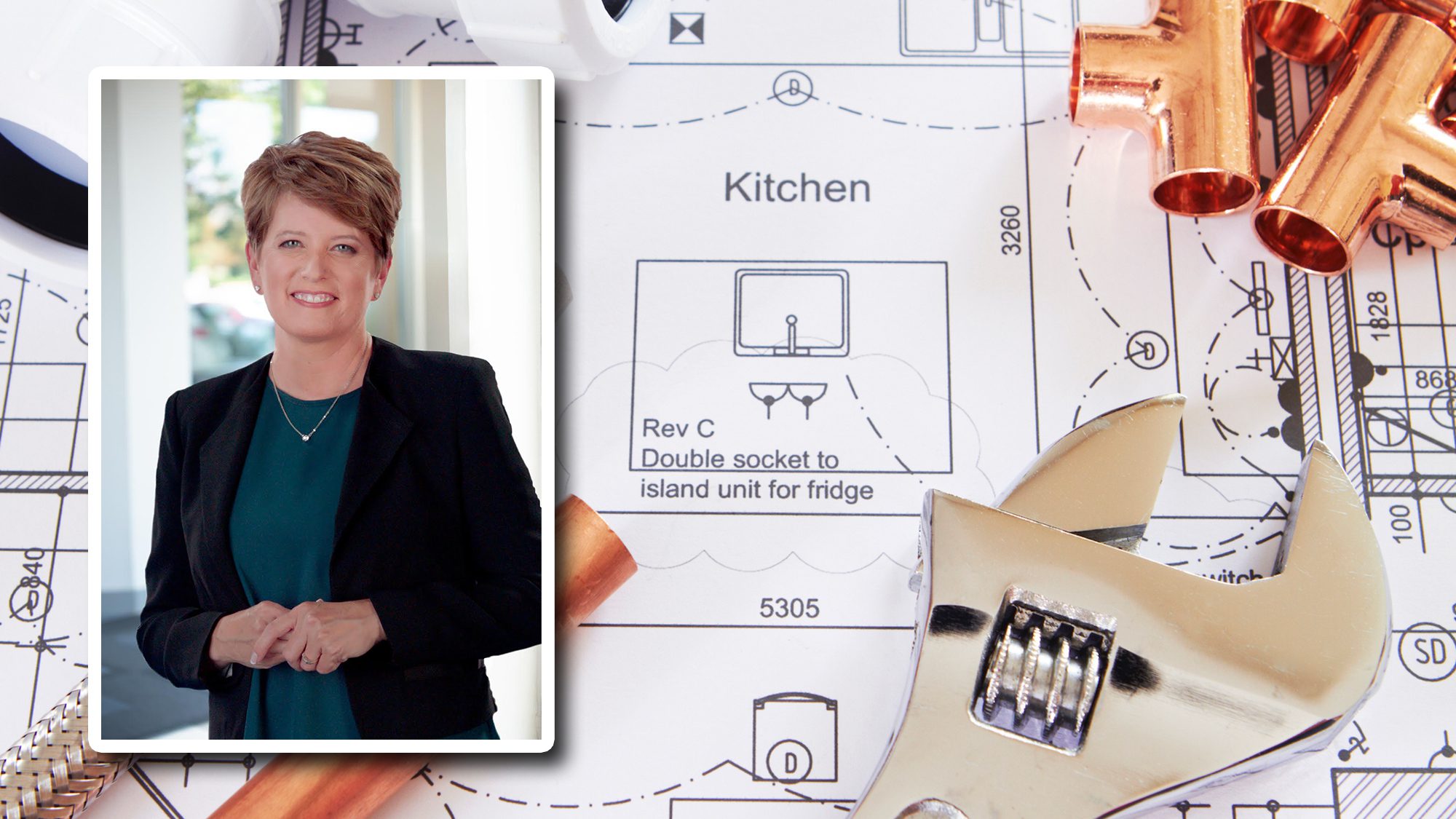
Daisy-Daisy/Getty Images
Thirty years ago, if you wanted to remodel your bathroom and you weren’t plugged in to your local network of contractors, well—you were stuck. Angie Hicks started her hugely popular ratings and review platform, Angie’s List, in 1995 after hearing about her co-founder’s frustrations with trying to find reliable contractors in suburban Columbus, OH. Since then, millions of homeowners have turned to the site to find help with plumbing, roofing, or general home improvement.
Since then, Hicks has become an expert on all things home improvement, and over the past 25 years, she’s seen and heard it all.
“Whether you’re a first-time homeowner or not, owning a home can be both a rewarding and stressful experience,” says Hicks. “During the past year, this became especially true as our homes have become more important than ever before.”
In a time when we’re staying home more than ever, because of the COVID-19 pandemic, many homeowners are assessing their homes and seriously contemplating making interior upgrades. If you’ve been toying with the idea of a renovation—or you just want to enjoy your home more—check out Hicks’ top tips that have stood the test of time.
1. Do your research, even in an emergency
Before hiring any contractor, Hicks recommends getting multiple bids and vetting the contractors and their subcontractors by checking references, reading reviews, and verifying licensing and insurance.
“It’s easier said than done, but try not to panic. Even during a home emergency, it pays to take the extra time to research your pros,” says Hicks. “Very rarely is the first option the best, and failing to properly research could leave you with a pro that creates more damage than they fix.”
She says cheaper is almost never better, and if it sounds too good to be true, it probably is. Some contractors promise ridiculously low prices or quick turnarounds that end up being a big disappointment. Consider getting bids from at least three contractors, to determine whether you’re getting a fair price.
2. Get your home improvement contract in writing
“This is a really important lesson that many people learn the hard way. Writing up a contract ensures that all parties are on the same page when it comes to total cost, timing, and more. While there may be some delays or minor changes to the original plan once the project gets started, a contract can help ensure there aren’t too many major surprises down the road,” says Hicks.
A contract should have detailed time frames, the total cost, payment arrangements, your contractor’s license number, the project description, names of parties involved, and how to handle additional costs if necessary, explains Hicks.
She also recommends reading the fine print carefully, whether it’s for a one-time service or a six-month renovation, and to not be afraid of asking for edits or clarifications before signing.
“Signing a contract that you haven’t read, or one that you don’t understand, can be just as risky as not having a contract at all,” she says.
3. Start an emergency home repairs fund
It’s never too early to start an emergency home repairs fund. Hicks recommends opening a savings account that’s attached to your checking account, and setting up automatic transfers from checking to savings every month or pay period.
“’Plan for the worst but hope for the best.’ This is true for many things, including your home. Repairs can be costly and unpredictable, so starting and regularly contributing to an emergency fund will leave you covered, just in case things go wrong,” says Hicks.
4. Get an annual home energy audit
A home energy audit helps assess how much energy a home consumes and can also show ways to improve efficiency and create more comfort in your home.
“Think of an energy audit as your home’s annual physical,” says Hicks. “It will help to pinpoint any areas that aren’t running as efficiently as possible and, in turn, are wasting your money. Correcting these energy issues can result in lower utility bills and create more comfort within your home.”
5. Know where your plumbing shut-off value is and how to use it
If a pipe bursts and starts spraying water all over your house, you’re going to want to know where your home’s emergency water shut-off valve is.
“The water system is one of the most important things in your home,” says Hicks. “In case of a water-related emergency, the first step is typically to get the water shut off as quickly as possible. Familiarizing yourself with your system can save you time and money and avoid costly repairs from water damage.”
6. Have a home emergency supply kit
Every home should have an emergency supply kit full of water, a flashlight, nonperishable food, extra batteries, a battery-powered radio, and a first-aid kit. Should a natural disaster leave your house badly damaged and without power for a week, you’ll be grateful you were prepared.
“Bottom line: It’s better to be safe than sorry. Knowing that you have a system in place in case of emergencies will provide you with peace of mind and keep you and your family safe,” says Hicks.
“Be sure that your emergency supply kit is stored in a safe, dry, and easily accessible location, and that each member of your household knows where it is and how to use it.”
The post 6 Essential Tips for Homeowners From Angie’s List Co-Founder Angie Hicks appeared first on Real Estate News & Insights | realtor.com®.
10 Palm Beach Decor Fails That Give Florida a Bad Name

9Air / Getty Images
Wishing you could escape to a sandy beach right now? While that may be hard to do, you might be tempted to bring the beach to you by embracing a popular home design style known as Palm Beach decor.
Palm Beach style first became all the rage thanks to Lilly Pulitzer, a socialite in Palm Beach, FL, who opened a store full of colorful dresses in the 1960s. Her designs soon ballooned into a huge lifestyle brand, complete with home furnishings—all characterized by wild patterns filled with coral, starfish, seashells, and other tropical motifs.
And, given celebrities and politicians galore seem to be moving en masse to Florida right now (think Donald Trump, his daughter Ivanka, Tom Brady, and others), the Palm Beach craze may only gain steam.
Don’t get me wrong—I long for the beach right about now, along with everyone else. Still, while a little dash of Palm Beach decor here and there might be nice, if you splash it everywhere, it can quickly go overboard. Here are some classic Palm Beach decor fails to avoid at all costs.
1. Sea shades
Too much Lilly is silly, alas, especially when paired with saturated ocean hues like turquoise and Kelly green. It’s enough to make you feel like you’re underwater—or worse, drowning—just standing in the space. A smidge of this cute pattern is fine, of course, or leave the bulk of it to your 5-year-old daughter’s bedspread or shams.
2. Pattern on pattern
Photo by Fun House Furnishings & Design
Eclectic is one thing, but too much of this style borders on wacky, as seen on this settee. We get the general idea here, which is giving a plain white couch some oomph with bright pops of color. Still, less is more, so subtract a few pillows, please.
3. Animal tables
Are elephants native to Palm Beach? I think not. So what’s the deal with turning them, along with monkeys, parrots, peacocks, and various types of lap dogs, into decor?
Yes, the natural world is beautiful and bringing the outside in makes sense in a warm climate, but these poor creatures should not bear the burden of our boxwood planters and cocktails.
4. Seashell furniture
I guess this is an antique to be cherished and passed down through the generations, but the rustlike veneer gives me pause. And with sharp shells protruding from all sides, this isn’t a piece you’d want to brush by in your bedroom or let kids handle.
The solution: Donate it—fast.
5. Coral decor
Coral is lovely when printed on napkins or plates—but not when it’s literally looming from the ceiling, stuffed into vases, and wrapped around glass hurricanes. And don’t get me started on the chair backs. (Can you say “ouch” every time you rest on them?)
6. Palm plant overload
Palm fronds and succulents and ferns—oh my! Draped on every table, dangling from above, and blocking doorways is not the way to style your home with greenery. Leave some room for other accessories (books, maybe?), and allow ample access to all entrances and exits in case of emergency!
7. Chinoiserie
Again, wild patterns on every surface can make your eyes bug out and your head swim. And pairing bamboo accents with miles of Chinoiserie is too much Palm Beach in one tiny loo.
Oh, a word of caution: Intricate scenes like these may prompt guests and family members to linger in your powder room while studying them, causing a line of waiting customers at the door.
8. Color explosions
Yards of fabric as displayed in this drapes-within-drapes look is a tragic design element I can’t unsee. (What goes on behind these green and yellow doorways anyway?) But the fatal flaw here is the color riot that requires sunglasses to view.
9. Lacquer
Photo by Michelle Workman Interiors
Lacquer is shiny and fun. But up close, this desk and the upper doors will force you to spend your free time wiping these surfaces to remove fingerprints. Yup, lacquer paint is a magnet for these smudges, and it looks good only when it’s pristine (sigh).
10. Trellis wallpaper
A twisting, turning trellis print, along with Greek key patterns, is dizzying—and enough of it on dining room walls might turn off your eaters.
The post 10 Palm Beach Decor Fails That Give Florida a Bad Name appeared first on Real Estate News & Insights | realtor.com®.
Thursday, January 28, 2021
The Open Floor Plan Is Not Dead—4 Reasons To Not Give Up on Airy Layouts

monkeybusinessimages/Getty Images
Remember when everyone was obsessed with the open floor plan? Over the past decade or so we’ve seen home shoppers with budgets large and small coveting a layout with a seamless flow among the kitchen, dining, and living spaces.
But the COVID-19 pandemic, which forced many of us to stay home, made us think very differently about our interiors. With working and schooling from home as the new normal, people are placing a higher premium on floor plans that offer privacy. That’s why, for the past year, homeowners living in an open floor plan have started second-guessing their layout.
But our desire for delineated spaces doesn’t necessarily mean the open floor plan is dead.
“While the pandemic has changed the way we use and see our space, there are solutions beyond closing off the kitchen or living room to provide workstations for family members,” says Sasha Bikoff, an interior designer and CEO of Sasha Bikoff Interior Design in New York.
In an era when living spaces have had to become functional and flexible, the open floor plan still offers some advantages. Here are a few of them.
1. Lighting makes open spaces more flexible than ever
Never underestimate the power of good lighting and how it can transform any room.
“In an open floor plan, lighting is a designer’s secret weapon,” says Bikoff. “Subtle differences in lighting can help open spaces feel like there are distinct zones or rooms.”
For example, in a recent project, Bikoff differentiated between the kitchen and living area by using bright pendant lighting above the kitchen island for food prep and indirect lighting in the living area to create a mood.
She says innovative lighting solutions, from companies like Ketra, offer easy programming and custom settings to make it easier to design open spaces.
2. Without open floor plans, homes can feel smaller and more formal
Part of why open floor plans originally became so popular is because they help make homes feel bigger, less restrained, airy, and modern, says Bikoff. And after months of being cooped up at home, that’s the exact vibe we want.
People have been getting away from formal rooms since the 1980s, says Phil Kean, architect and owner of Phil Kean Design Group in Winter Park, FL. He says removing walls gives a sense of spaciousness that brings homes alive.
“I call it borrowing space. Rooms suddenly feel much bigger when you’re combining the square footage of several rooms and allowing homeowners to use the full space, rather than needing to navigate around walls,” says Kean.
He notes that open floor plans can include the outdoors, “with homeowners using full glass walls to create the feeling that their floor plans extend to outdoor living spaces.”
3. Greater access to natural light
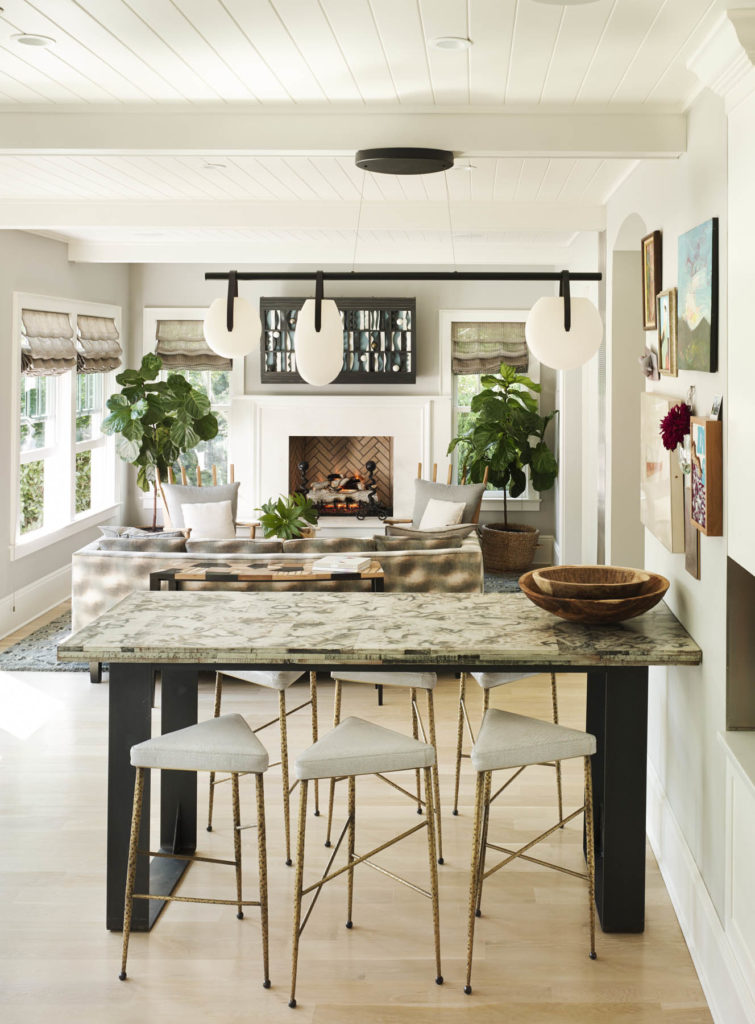
Ketra
Open floor plans help ensure all rooms have access to windows and natural light, especially in smaller homes or apartments.
Bikoff says in recent years, people have been seeking a greater connection with nature, and natural light is a top request for nearly all of her clients.
Kean also says open floor plans are critical in bringing access to light and the outdoors.
“If you have 16 feet of windows with a view and you’re forced to divide that between rooms, you’re limiting impact and access as compared to an open floor plan, where you can access that view and the natural light from all areas of the living space,” says Kean.
4. Prioritize closed-off rooms
If you now have the flexibility to work from home and simply can’t get any work done in your open floor plan, don’t despair. Shift the focus to prioritizing the rooms of your home that offer privacy.
Kean recommends investing in solutions that add functionality to closed-off rooms like a guest room or main bedroom.
“For example, you can transform a guest bedroom into a dual-function office and bedroom space by installing a Murphy bed, which we’ve seen rising interest in,” says Kean.
You can also install low, open shelving in a corner of your bedroom for a desk space.
The post The Open Floor Plan Is Not Dead—4 Reasons To Not Give Up on Airy Layouts appeared first on Real Estate News & Insights | realtor.com®.
What Is Japandi? Ellen DeGeneres and Kimye’s Favorite Decor Style, Explained
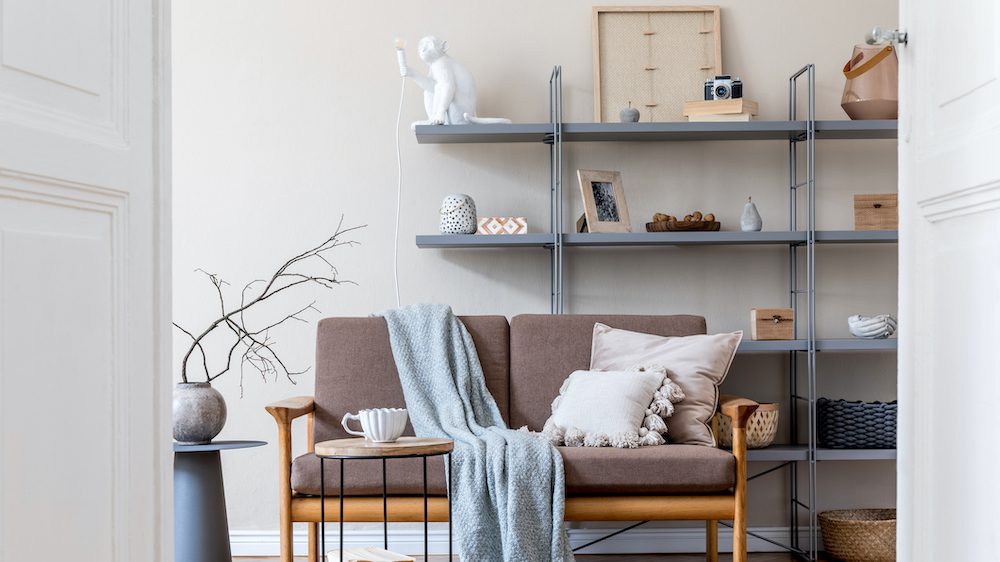
FollowTheFlow / Getty Images
Ever wonder what gives the homes of Ellen DeGeneres, soon to be ex-couple Kimye, and other stars their chic, Zen-like charm? The answer is often “Japandi,” a mashup of Japanese and Scandinavian styles that’s calmly infiltrating homes today.
In fact, Pinterest searches for Japandi doubled year over year, according to the decor site’s 2021 predictions report, so much so that it dubbed Japandi “the new modern” of the year.
Simple, uncluttered, neutral, and natural, the “Japandi design concept showcases minimalism and a low-key color palette,” says designer Marty Basher.
Ana Cummings of the eponymous design firm says that DeGeneres’ Montecito, CA, mansion is a perfect example of Japandi style, with its focus on natural materials (glass walls, bamboo ceilings), earth tones, and clean furniture lines.
Or look to the marble-clad, nearly all-white Hidden Hills, CA, estate of Kim Kardashian West and Kanye West.
“Japandi was adopted by the couple throughout the home,” says Basher.
If you’re looking to make a clean break from 2020 (and frankly, who isn’t?), embracing this fresh look is just the ticket. Here’s more on the history of Japandi style, and how to incorporate it into your own home.
The history of ‘Japandi’ style
Japandi home design traces it origin to long-standing cultural ties between Denmark and Japan.
“It’s a relationship that began more than 150 years ago, when Danish artists and designers began traveling to Japan in search of new inspiration,” says Basher.
These seemingly disparate nations already had similar design philosophies, so a marriage of the two was inevitable.
“The wabi-sabi movement in Japan, which highlights imperfections and the use of natural, handcrafted materials, has a lot of similarities to traditional Scandinavian hygge designs,” says Cummings.
From ceramics and textiles to quiet colors and natural fabrics, the Danish and Japanese cherish a time-worn appearance and the rich traditions of crafting.
“People in both countries appreciate minimalist interiors, and the look has certainly gained a much bigger following during this past home-bound year,” Cummings says.
Make furniture functional
Photo by Rowland+Broughton Architecture & Urban Design
Clutter is extremely forbidden in a Japandi home as it clashes with the decor’s principles that emphasize a function-driven space with statement pieces rather than an abundance of items, says Karen Gray-Plaisted of Design Solutions KGP.
To that end, a dining room like this one fits the bill with furniture that features clean lines and practicality.
“Accessories have lesser importance in this design style, but the ones that do show up lean toward natural elements like plants and wooden bowls that add warmth to the entire room,” she says.
Choose quiet shades
Whites, off-whites, and all manner of beige are typical in a Japandi home, but this doesn’t mean a little brightness can’t also be introduced.
“Japandi colors also include softer tones such as light grays, pinks, blues, and greens,” says Basher.
And natural light is key to this home style, so throw back the curtains (or remove them completely) in order to flood your interiors with sunlight.
Lean on wood and stone
“Japandi design relies heavily on the use of natural elements—and the presence of wood and stone help to create a sense of balance,” says Basher.
Wood tones are usually light or blond choices mixed with other real materials (think rattan, paper, and bamboo).
“Unglazed pottery or dishes made to appear more organic in shape over perfectly round profiles are also welcome,” says Cummings.
Accessorize with care
Photo by Design Build 4U Chicago
A spare—or even bare—aesthetic is another Japandi calling card. Extra stuff has no place in this baby nursery nor does it rule supreme on kitchen counters or your bedside table. Instead, choose just a single accessory or two and showcase it.
“Minimalism is an essential feature here, which applies to every piece of furniture and also means zero clutter,” says Basher.
Nix busy patterns
You don’t need to go full-on stark with white walls and plain linens, but know that patterns should be sparse in a Japandi home.
“Stay away from textiles with a lot of lines, curves, and checks, as these are overpowering and defeat the purpose of this simplified style,” says Basher.
Shop related brands
Photo by BoConcept Pennsylvania
Estate sales and antiques shops can yield stunning one-of-a-kind pieces, but more cost-conscious homeowners can look to Ikea and even Target for Japandi pieces.
“These big-box brands are hopping onto this trend and fabricating items with this particular aesthetic in mind,” says Cummings.
Basher recommends Maruni, a Japanese brand that crafts mass-market options as well as BoConcept, a Danish company with stores in dozens of countries that’s known for modern furniture, accessories, and lighting with Scandinavian flair.
The post What Is Japandi? Ellen DeGeneres and Kimye’s Favorite Decor Style, Explained appeared first on Real Estate News & Insights | realtor.com®.
Exclusive: Matt Paxton Has Something To Say to the ‘Hoarder’ Hiding in Us All

My Entertainment Production Team
“Hoarders” host Matt Paxton may be best known for helping pack rats purge their possessions. But in his new show, “Legacy List,” he focuses on a far more common problem: What to do with all the stuff your parents and grandparents hang on to that might eventually end up with you.
“Legacy List,” which airs on PBS on Mondays at 9 p.m., follows Paxton and his team as they visit homeowners faced with downsizing attics and basements full of family belongings. Paxton helps his clients not only whittle this mountain down to a handful of valued mementos—aka their “legacy list”—he also helps them pinpoint surprising items worth thousands of dollars, from old baseball cards to antiques.
Yet Paxton is the first to admit that even he has struggled to unload family possessions. We at realtor.com® chatted with him to hear his best advice for handling the toughest clutter of all.
Jay Paul, Jay Paul Photography
You had a lot of responsibility when it came to your own family estate. How was that experience?
I don’t remember a lot. I was 25, I was a kid. My dad, stepdad, and both my grandfathers all died within about two years, so I was just going through all these houses. And when you’re grieving, it’s not really the best time to go through it. If you’re moving and that’s why you’re decluttering, usually that’s positive, so you can make the decisions easier.
What advice do you have for people who are purging stuff from family members who’ve passed away?
I always say, “Focus on the things you absolutely know you don’t want.” That’s an easy way to get started.
Anna Conger
You recently packed up and moved. Did you have to purge beforehand?
My three sons and I had been in a house for about 15 years. And it’s funny, I do this on TV, been doing it with both “Hoarders” and “Legacy List” and for 20 years privately as well, but until you do it yourself, you forget how hard it is. I’ve helped thousands of families, but when you go through boxes of your parents’ stuff and your loved ones’ stuff, that’s when it gets hard.
Because stuff is memories—we keep it because they’re memories of people we care about. It’s not really the financial value; it’s the emotional value.
Did you find any surprising items during your move?
I did find a stick in a box that said “fragile” in my handwriting, so clearly I packed it. I don’t know what it was for. I don’t know why I saved it. But it obviously meant a lot to me at the time. Sometimes, if you don’t write down the stories, you don’t know why they meant so much to you. So, that I actually just threw away.
Anna Conger
What tips do you have for people who want to get their home organized during the pandemic?
Try to do it now. Give yourself a box a week. You don’t have to do it all in one sitting. Bring one box down and do it while you’re watching TV. But give it the time that it deserves. If you try to cram it in a long weekend, you can’t get it done.
Many people have family heirlooms in their home that they don’t want, but feel guilty throwing out. What advice do you have for these people?
This is the hard part, when it matters emotionally to you but not enough to keep it. That’s when I tell people to call your family members and tell them about the item. If they don’t want it, it’s OK to donate, even if it’s something from someone you love.
I compare it to leftover pasta. You could say, “Do you want the pasta for dinner? Because if not, I’m throwing it away tomorrow.” Like, you don’t want it. Why are you pushing it on somebody else?
I really love those Facebook Buy Nothing groups. That’s a great way to empty your house quickly, and it doesn’t cost you anything. You know that those items will go to somebody in your community who can use them.
Anna Conger
A lot of times people start going through boxes because it’s time for a parent or grandparent to move into a retirement home. What advice do you have for them?
Start small. I can’t ask my grandmother to work for 10 hours straight. Work for two hours every other Saturday. If I learned one thing from being on “Hoarders,” the worst way to clean out a house is five days straight, 10 hours a day. We do it that way on TV, and it’s the worst way we could possibly do it, but it’s the only way to knock out a job that big. At home, pace yourself.
I really challenge everybody that if you think you’re going to move in the next 10 years, now’s the time to start doing it. Give it an hour or two a week.
Your philosophy is to focus on keeping just five legacy list family mementos. Why five?
You have to have a limit. If you have more than five, it becomes 10, and then it becomes 30, and then you’re on “Hoarders.” It’s kind of like ice cream. If you eat it every night, it’s not really a treat. It’s just something you eat every day. The whole point of a legacy list item is that it’s special.
Do you mind sharing something from your own legacy list?
I have one of my dad’s old rings that he gave to me the night he died. I have my mom’s piano. I have a piece of art from my dad. I have a letter from my 9-year-old son.
When you come down to it, there isn’t a whole lot of stuff you really need. I think the older you get, the less you really need.
JR Delia
You’ve also seen people throw out things that are actually really valuable. Why does this happen?
People don’t go through the boxes. They’re, like, “Oh, this is china, this isn’t worth anything.” Put 10 minutes of research into everything. Google the value.
Now, don’t keep it just because you think it’s worth something. But it wouldn’t hurt to check, especially with things like baseball cards, coins, and stamps. The collections we’re finding now are often our grandparents’ collections, and those things can be a hundred years old.
What makes something financially valuable is scarcity. Beanie Babies? Not valuable, because there’s millions of them.
But the things coming out of your grandparents’ house, they may actually be financially valuable, even if you don’t want them. A lot of the midcentury modern furniture coming out of the ’50s is extremely valuable. I found a Picasso this year on “Legacy List” sitting in an attic.
What other advice do you have for sifting through family heirlooms?
With pictures, wear cotton or rubber gloves. You can ruin pictures and documents by not wearing gloves.
What has been one of your favorite finds from ‘Legacy List’ so far?
In the pilot episode while going through a client’s home, I actually found one of my dad’s paintings. My dad was an artist. We were filming the pilot, and there it was and I started crying. That was insanely special to me.
Of course, I had to buy it at auction because it was owned by a client, so I was just hoping no one would outbid me. I actually have that in my office now.
How do you let go of the items yet hold on to the memories?
Marie Kondo will tell everybody “What sparks joy?” Well, that doesn’t work for clients on “Hoarding” because everything sparks joy for them.
I just say, “Hey, tell those stories,” and document it. Either put it on camera, video, or audio. Somehow get those stories recorded and start sharing with your family. You spend 30, 40 years creating these memories, you’ve got to share the stories. Just get started an hour a week, and create your legacy list to share with your family. I think you’ll be amazed. You’ll hear the reaction of your family members; they’ll love the stories. And when you start to share those stories, you start to realize it’s not the items—it’s the people. You’ll find you’re able to let go of more items that way.
We need positivity right now in the world. This is a great way to just be happy.
The post Exclusive: Matt Paxton Has Something To Say to the ‘Hoarder’ Hiding in Us All appeared first on Real Estate News & Insights | realtor.com®.
Wednesday, January 27, 2021
8 Magical Organizing Products That’ll Instantly Bring Order to Your Home in 2021
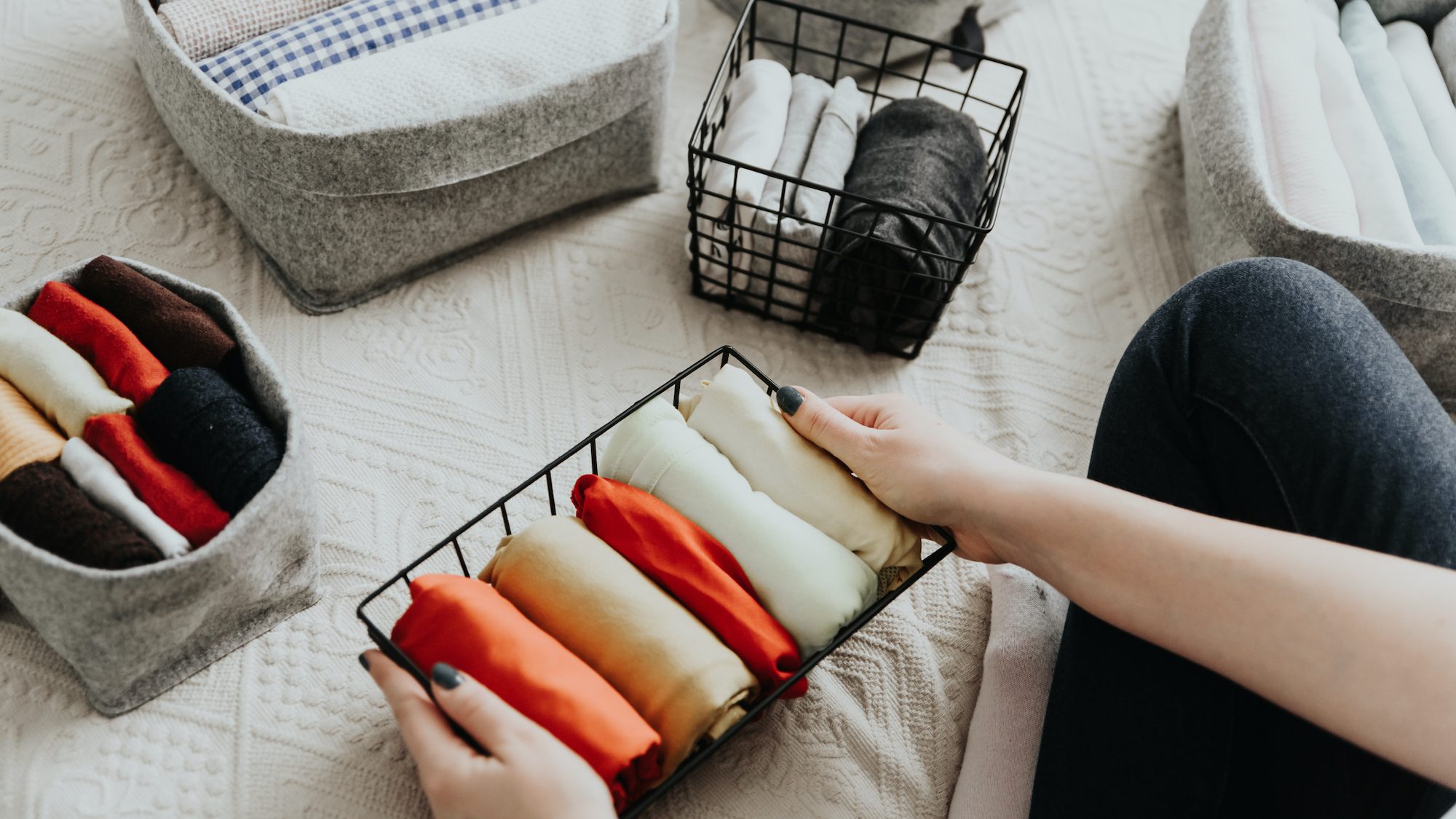
Damian Lugowski/Getty Images
If you’re anything like us, then you’ve resolved to make 2021 the year that you finally get organized (after making the same resolution last year, and the year before, and the year before that, of course).
But also, if you’re anything like us, you have no idea where to start.
That’s where having the right tools comes in. Not only can the proper supplies and products make organizing a breeze, but they’ll also make the process—dare we say—fun.
So after consulting with professional organizers from coast to coast, we’re bringing you the eight products you’ll need to finally get your home in tiptop shape in 2021. Go on with your bad organizing self—and have a blast!
1. Dividers for unruly drawers
Wayfair
Are your dresser drawers overflowing with underwear, socks, and other pieces of clothing you’ll never be able to find? Then you just might need a set of these fabric drawer dividers ($22) from Wayfair.
“These are amazing in drawers to create compartments and divisions so everything doesn’t get all jumbled up,” says Liz Jenkins of A Fresh Space. “They aren’t a permanent installation, but for clients who don’t have built-in dividers, they’re life-changing.”
2. Wheeled storage for cleaning products
Macy's
You know that corner or cabinet of your house that’s stuffed to the brim with cleaning products and other household supplies? Well we’re here to bring those babies out into the light (where you can actually find what you need without creating a brand-new mess).
“We all know that cleaning items come in so many different shapes and sizes,” says Mary Cornetta of Sort and Sweet. “By having extra tall shelving or racks, you don’t have to worry about what can fit and what can’t.”
Stop stuffing all your cleaning products into a pile, and try this Whitmor three-tiered rolling cart ($40) from Macy’s.
3. Pots and pans lid organizer
Home Depot
Speaking of piles, we didn’t forget about the stacks of lids taking up all the space in your kitchen cabinets. Rather than constantly searching for the right lid for your Tupperware containers or pots and pans, you might try using a few of these steel lid organizers ($15) from The Home Depot.
“This is one of our favorite organizing products because of how versatile it is,” says Cornetta. “We not only use it to store lids—which makes them easier to grab—but also baking sheets, cutting boards, trivets, muffin tins, pie plates, and more.”
4. Can racks for your pantry
Kohl's
Nothing can make a kitchen feel chaotic quite like a precariously arranged tower of canned goods—especially during a pandemic, when many of us are guilty of stocking up on shelf-stable foods.
“These can racks help you to see what you have on hand, rather than blindly buying at the grocery store,” says Cornetta. “They also give you a limit to the amount of items you can store at once, thus reducing pantry clutter.”
Bring order to your kitchen with one of these six-tier, double-can racks ($60) from Kohl’s.
5. Not-so-lazy Susan
Macy's
She might sound lazy, but this little organization wonder is anything but.
“Lazy Susans are a game changer in the kitchen,” says Hannah Hearin of Home Refreshment. “I love these for baking goods or oils, and the one with dividers is perfect for organizing medicine, school or art supplies, and bathroom essentials as well.”
Do yourself (and your cabinets) a favor, and pick up a two-tier Lazy Susie ($25) from Macy’s.
6. Clutter-defying paper shredder
Kohl's
One of the best ways to make more space in your home this year is by ditching all that extra paper clutter like old bills and bank statements.
“For security reasons, it’s a lot better to shred than simply throw out,” says Cornetta. “If you have the time, or teens who need chores, it can save money rather than bringing it to a shredding company.”
Clear your closets of all that extra paper with this PowerShred paper shredder ($180) from Kohl’s.
7. Irresistible label maker
Lowes
The only reason I don’t have one of these in my house is that everything would be labeled—including the dog (yes, they’re actually that fun). If you’re someone with a little more self-control—and a number of real things to label—you can’t go wrong with adding one of these Dymo label makers ($25) to your toolbox.
“These are super helpful for families or roommates,” says Cornetta. “Especially when multiple people are using the same items and need to know where to find them and put them back.”
8. Handy closet utility rack
Wayfair
Somehow, cleaning supplies such as brooms, mops, and dusters seem to accumulate at rapid speed and, before you know it, they’re eating up an entire corner of every closet in the house.
No more, we say! Get yourself a few of these Whyalla closet mop and broom organizers ($14) and never compete in ultimate closet wrestling again.
The post 8 Magical Organizing Products That’ll Instantly Bring Order to Your Home in 2021 appeared first on Real Estate News & Insights | realtor.com®.
‘Frozen in Time’ Reveals What To Keep (and Toss) for Maximum Midcentury Charm
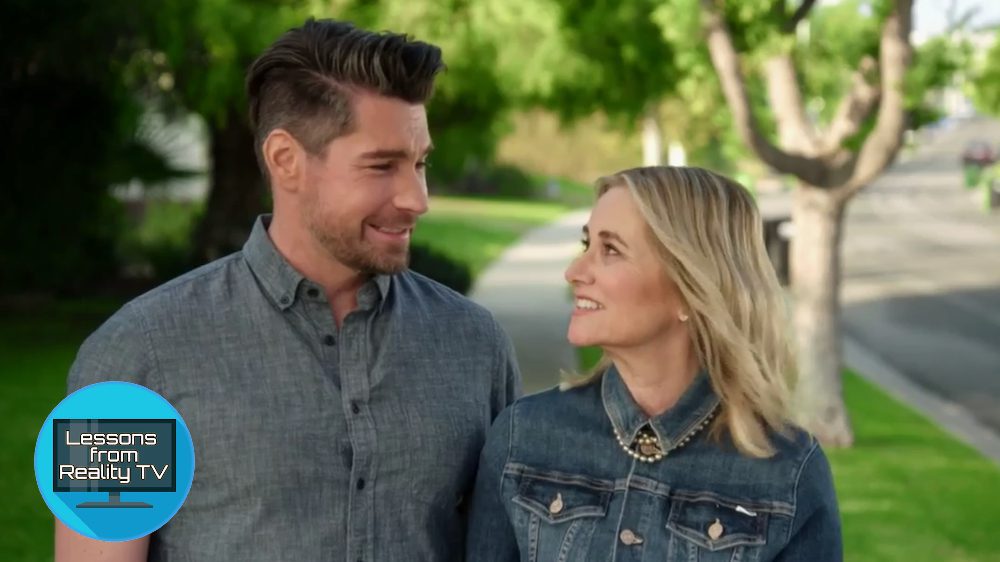
Discovery+
On “Frozen in Time,” designer Dan Vickery and Maureen McCormick (Marcia of “Brady Bunch” fame) travel around Southern California updating drab homes from the 1950s and ’60s. Yet rather than replace the decor with a whole new look, they often try to bring these homes back to their midcentury modern glory.
Midcentury architecture has seen a resurgence in popularity, so it makes total sense that Vickery and McCormick would work to preserve this style. Yet they can’t keep all the original details, lest these houses look stuck in a bygone era.
Not sure what to keep, or toss, to achieve a midcentury look that’s still, well, modern? To guide your design decisions, take a look at what this renovation team preserves—and what it lets go.
Ditch: the shag carpet
Discovery+
Probably the first midcentury modern feature that Vickery and McCormick are more than happy to toss is shag carpet. In fact, in the “1961 House” episode, they encounter a home with wall-to-wall shag carpeting, even in the kitchen and bathroom!
“It was not only dirty and dated,” Vickery says of the carpet, “but it was sucking up all the light in this room.”
Discovery+
Vickery and McCormick decide to replace the carpet with vinyl flooring, an inexpensive yet beautiful alternative. When the floors are finished, the home is transformed. While the shag carpet made the home look drab, the new flooring gives the space a clean, bright vibe.
Keep: pastels in the bathroom
Discovery+
While many people want a midcentury look in their living room, it can be hard to incorporate the same style into the bathroom, since this is a space homeowners want to feel modern and sleek.
Vickery and McCormick set a good example in the “1958 House” episode, when they redo a bathroom with modern appliances, but give it a ’50s vibe with a retro color.
Discovery+
The bathroom already has pink hues when they find it, but they update the space with stylish mirrors, new tile, and a fresh coat of paint. It looks beautiful!
“Pink and white were totally the colors that you would see in a bathroom from the ’50s,” McCormick points out when the bathroom is finished.
Keep: flat-panel cabinets (but change the color)
Discovery+
The “Stuck in the ’60s” episode is all about creating a midcentury kitchen that will work in the 21st century.
During this renovation, McCormick and Vickery are tasked with the challenge of taking a 1980s kitchen back to the 1960s, while also updating the space to modern tastes.
Discovery+
One way they do this is with simple cabinet doors, which could go with both modern and retro styles.
“The cabinets, because they’re flat-face, are reminiscent of a 1960s kitchen,” Vickery explains.
Plus, these cabinets are high-gloss white, which makes the space feel clean and modern without taking away from the midcentury-inspired backsplash.
Keep: plenty of planters
Discovery+
In the “1957 House” episodee, McCormick and Vickery find a midcentury detail they love: a built-in planter. While the homeowners admit they were never sure what to do with this planter, McCormick and Vickery embrace the midcentury feature.
“In the 1950s, they were strongly influenced by nature. You would see this a lot, where they would force you to have landscaping inside the home,” Vickery explains.
Discovery+
After ensuring the planter has proper drainage under the house, McCormick helps the homeowner by planting some greenery in the spot. With the planter full of beautiful green leaves, the entryway now feels more lively.
Ditch: loud colors
Discovery+
While McCormick and Vickery want to embrace many midcentury features, they run into a color they refuse to keep in the “1950 House” episode. This house is covered in bright pink paint—and Vickery, McCormick, and the homeowners want the color changed.
Discovery+
McCormick helps choose a mint color that’s reminiscent of the era without seeming too bold. When the house is finally finished, both the designers and homeowners are relieved.
“The pink was so intense,” Vickery says.
Keep: the brick fireplace
Discovery+
Vickery and McCormick work hard to update each home, but they know that some features don’t need to be changed at all.
In the “1955 House” episode, Vickery and McCormick find an old home with a great living room. While they update the space by taking the wood paneling off the walls and switching out the furniture, they keep the fireplace exactly the same.
While its dark brick may not be as popular these days, the fireplace with its chunky wood mantel looks great in this home, so Vickery and McCormick decide to keep it as is.
“There are a lot of things that have not gone out of style. I mean, everybody still wants exposed beams. Everybody wants a fantastic fireplace to gather around,” Vickery says.
The post ‘Frozen in Time’ Reveals What To Keep (and Toss) for Maximum Midcentury Charm appeared first on Real Estate News & Insights | realtor.com®.

